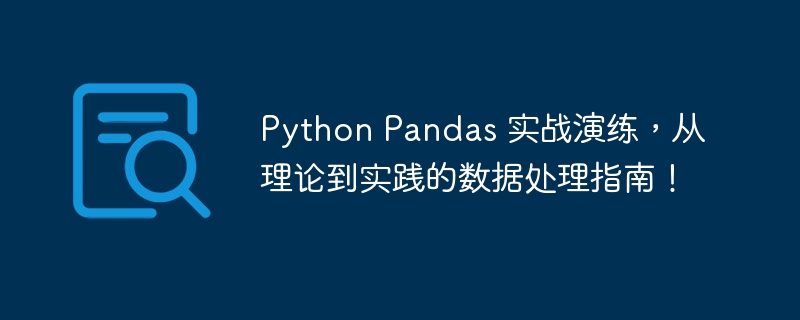

python pandas is a powerful data analysis and processing library. It provides a comprehensive set of tools that can perform a variety of tasks from data loading and cleaning to data transformation and modeling. This hands-on walkthrough will guide you through mastering Pandas from theory to practice, helping you effectively process data and derive insights from it.
Data loading and cleaning
read_csv() and read_<strong class="keylink">excel</strong>() functions. head() and info() functions to preview data structures and data types. dropna(), fillna() and drop_duplicates() functions. Data conversion
rename() and assign() functions to rename columns and add new columns. astype() and to_datetime() functions to convert the data type. groupby() and agg() functions to group and aggregate data. Data Modeling
concat() and merge() functions. query() and filter() functions to filter data. sort_values() and nlargest() functions to sort the data. data visualization
plot() function to create basic charts such as histograms, line charts, and scatter plots. Seaborn library to create more advanced charts such as heat maps, histograms, and boxplots. Practical case
Case 1: Analyzing sales data
Case 2: Predicting Customer Churn
Best Practices
in conclusion
Mastering Pandas can greatly enhance your ability to process and analyze data. By following the steps outlined in this practical walkthrough, you can efficiently load, clean, transform, model, and visualize data, extract valuable insights from your data, and make better decisions. Mastering Pandas will provide you with a solid foundation for working in data science and analytics in a variety of fields.
The above is the detailed content of Python Pandas practical drill, a guide to data processing from theory to practice!. For more information, please follow other related articles on the PHP Chinese website!
 How to restart the service in swoole framework
How to restart the service in swoole framework
 The relationship between bandwidth and network speed
The relationship between bandwidth and network speed
 How to switch between Huawei dual systems
How to switch between Huawei dual systems
 Python online playback function implementation method
Python online playback function implementation method
 Remove header line
Remove header line
 What is the difference between a demo machine and a real machine?
What is the difference between a demo machine and a real machine?
 What are the common secondary developments in PHP?
What are the common secondary developments in PHP?
 Introduction to article tag attributes
Introduction to article tag attributes




